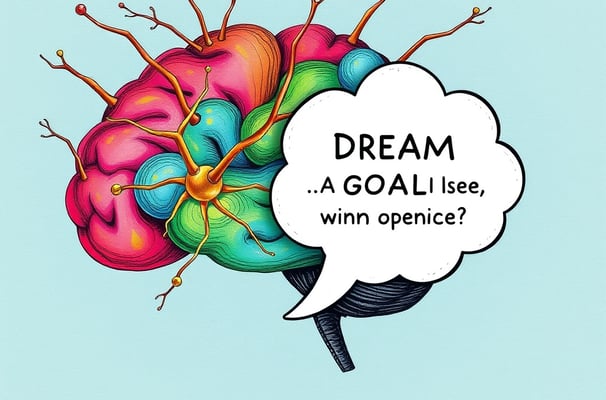The Science of Manifestation: Fact or Fiction?
Investigate the controversial world of manifestation, separating myths from the science behind attracting what you desire


In the age of hashtags, vision boards, and motivational TikToks, manifestation has taken center stage. Everyone from celebrities to influencers claims they "manifested" their success, soulmate, or even a free cup of coffee. But what’s the truth behind this cultural phenomenon? Is manifestation a legitimate tool rooted in science, or is it merely wishful thinking dressed up in spiritual jargon? Let’s dive into this intriguing topic, separating myths from facts while keeping our skepticism (and sense of humor) intact.
What Is Manifestation?
Manifestation, in simple terms, is the practice of bringing your desires into reality by focusing your thoughts, emotions, and actions on them. Think of it as ordering from the universe's magical menu. Want that promotion? Visualize it. Dreaming of a beachside villa? Pin it to your vision board. But can envisioning your desires really make them come true?
The roots of manifestation can be traced back to ancient practices like Hinduism, Buddhism, and even Hermetic teachings, where the mind’s power was emphasized. Fast forward to the 21st century, books like The Secret and movements like the Law of Attraction have made manifestation a household term. These philosophies claim that thoughts become things and that what you focus on expands.
But—and here’s the catch—does the universe work like Amazon Prime?
The Science Behind the Buzz
When we strip away the spiritual veneer, manifestation often hinges on psychology and neuroscience. Let’s explore the evidence:
1. The Reticular Activating System (RAS)
Ever notice how when you’re thinking about buying a red car, suddenly you see red cars everywhere? That’s your Reticular Activating System (RAS) at work. This network of neurons in the brain filters information, helping you focus on what’s relevant. When you constantly think about a goal, your RAS tunes into opportunities that align with it.
2. Cognitive Behavioral Therapy (CBT)
CBT, a well-established psychological approach, emphasizes the power of thoughts in shaping behavior. If you’re thinking positively and envisioning success, you’re more likely to act in ways that lead to positive outcomes. This might explain why people who practice manifestation often report success—they’re simply focusing their energy in productive ways.
3. Neuroplasticity
The brain’s ability to rewire itself is nothing short of miraculous. Studies show that consistent visualization can strengthen neural pathways, making certain behaviors or outcomes more likely. In essence, you’re training your brain to expect (and achieve) what you desire.
Where Manifestation Meets Misconception
Despite its grounding in some scientific principles, manifestation often ventures into murky waters. Here are some myths worth busting:
Myth 1: Just Think Positive, and It’ll Happen
If only life were that simple! Positive thinking is crucial, but without action, it’s like planting seeds in concrete—nothing grows. A powerful quote sums it up: “Dreams don’t work unless you do.”
Myth 2: The Universe Owes You
The universe isn’t your personal genie. While aligning your energy is great, entitlement isn’t a strategy. True manifestation involves gratitude, hard work, and sometimes, patience.
Myth 3: Failure Means You Did It Wrong
Not achieving a goal doesn’t mean you’re bad at manifesting. External factors, timing, and sheer luck all play a role. As one anonymous sage put it, “Sometimes, rejection is redirection.”
The Humor in Hocus-Pocus
Let’s be honest: manifestation can get a little… absurd. Consider the person meditating on their couch, visualizing a million dollars, while ignoring bills piling up on the counter. Or the influencer selling overpriced manifestation journals with promises of instant results. It’s easy to see why skeptics roll their eyes.
However, humor aside, there’s something undeniably appealing about the concept. Who wouldn’t want to believe they have control over their destiny? As humans, we’re wired for hope.
Practical Tips for Manifesting (Without Losing Your Grip on Reality)
Get Clear on What You Want Specificity is key. Instead of vague goals like "I want to be successful," try something measurable like "I want to earn $10,000 more this year."
Visualize, Then Strategize Spend time imagining your goals in vivid detail. Then, back it up with a solid action plan. Dreams without deadlines are just fantasies.
Cultivate Gratitude Appreciating what you already have creates a positive feedback loop. Gratitude shifts your mindset from scarcity to abundance, aligning you with your goals.
Take Action (Yes, Really!) Manifestation without effort is like trying to win the lottery without buying a ticket. Show up, work hard, and take calculated risks.
Stay Open to Opportunities Sometimes, what you want may not come in the package you expected. Keep an open mind and embrace the journey.
Final Thoughts
So, is manifestation fact or fiction? The truth lies somewhere in between. While there’s no scientific evidence that the universe will magically deliver your desires, there’s plenty of proof that focused thoughts, positive emotions, and determined actions can transform your life.
As we navigate the fine line between faith and practicality, remember this anonymous nugget of wisdom: “Manifestation works best when you meet the universe halfway.” So dream big, work hard, and laugh often—because if nothing else, life’s too short not to hope for a little magic.






